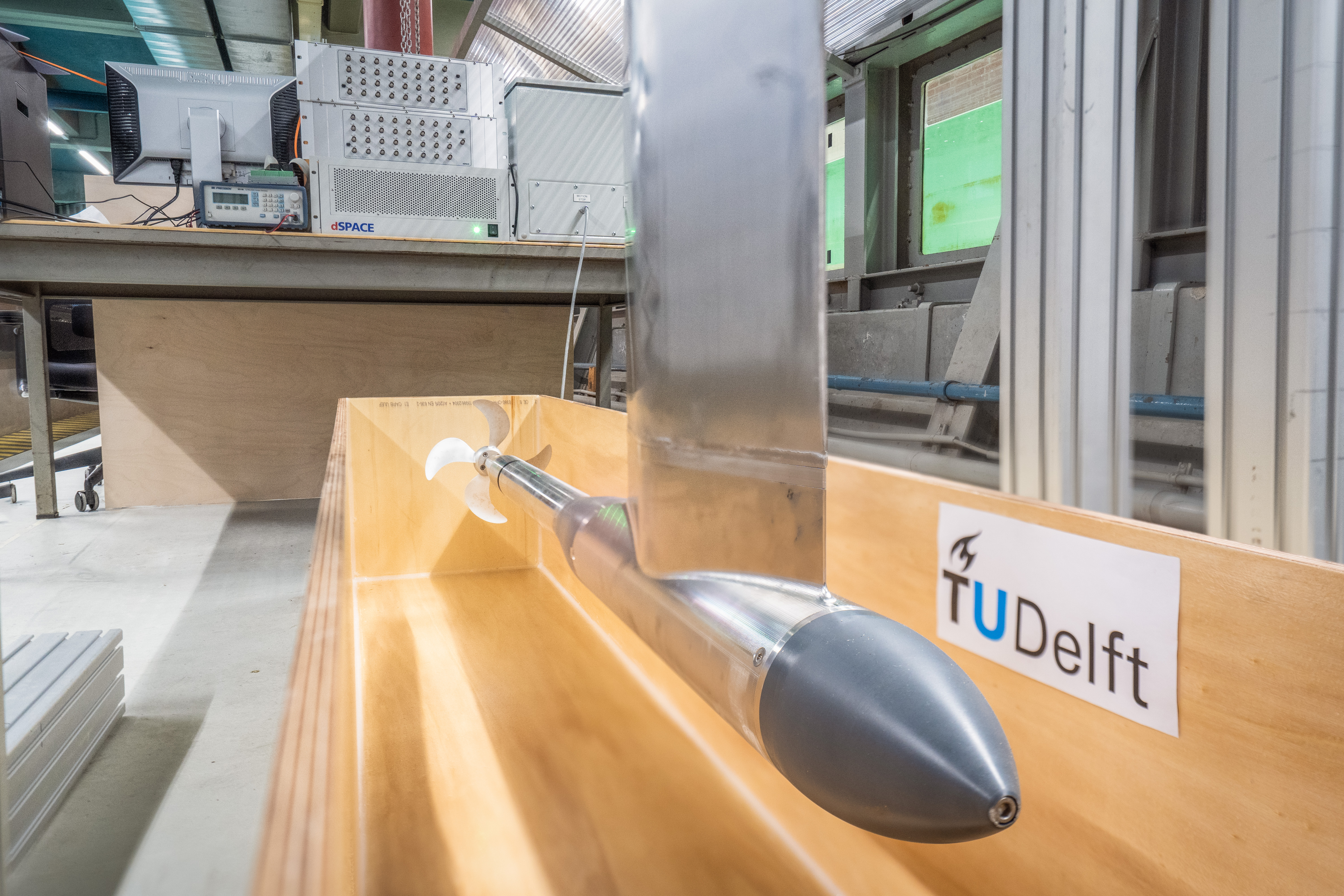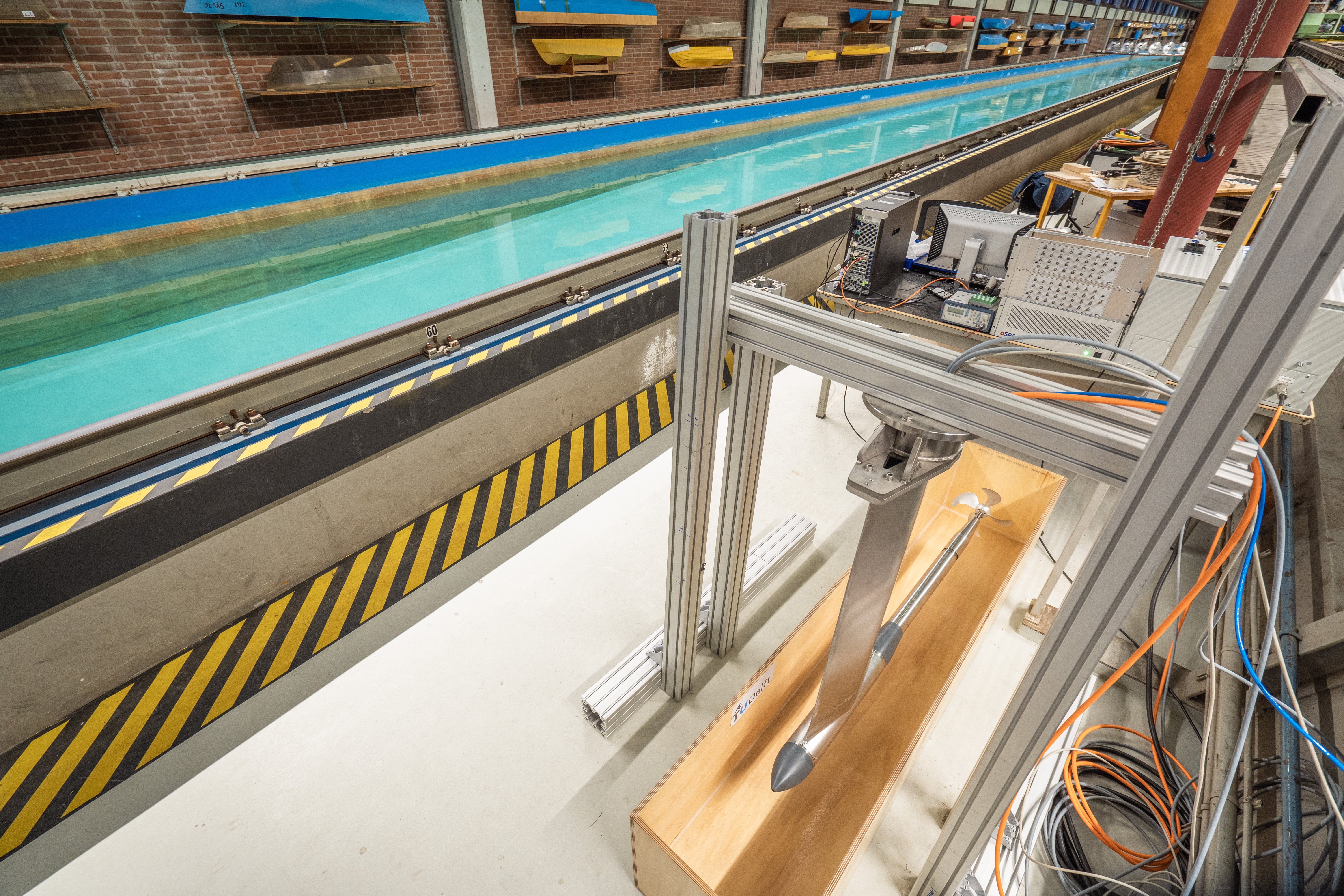Digital engine room in the towing tank
As a result of stricter environment regulation, ships will have to use renewable fuels more frequently in the future instead of diesel. This means that the familiar ship diesel engines will be gradually replaced by new technologies, such as gas engines and fuel cells. Often these systems have already been tested on land, but are they also safe for use in the open sea? To find answers to these questions, research Arthur Vrijdag and PhD candidate Lode Huijgens, who work at the Department of Maritime and Transport Technology (MTT), developed a globally unique Propeller Open Water (POW) setup.
Propeller Open Water setup
What makes the POW setup special and unique is that it combines hydrodynamic and mechanical engineering aspects of ship propulsion in a unique way. Normally, these issues are almost always dealt with separately. Mechanical engineering aspects, such as the behaviour of engines and fuel cells, are often simulated on computers, while complex hydrodynamics are examined with scale models in the towing tank. The POW setup connects both of these aspects and their interactions through powerful computers, in which simulation models of ship propulsion machines can be seen and connected to scale models of the propeller. This propeller is subsequently placed in a realistic environment with waves, for example, and strong ship movements. This makes it possible to replicate and study the dynamic, often unknown interaction between the propulsion and the current around the propeller in detail.
The new setup contains several findings that are being put into practice for the first time. Both Arthur Vrijdag and Lode Huijgens, as well as researcher Peter Poot and his team from the TU towing tank, therefore face a series of considerable challenges. Once these have been overcome and the first experiments have been completed, TU Delft will have gained a unique scientific tool, and shipping will have moved a step closer to the safe use of renewable fuels and propulsion systems thanks to the contribution of advanced scale-model test methods.


